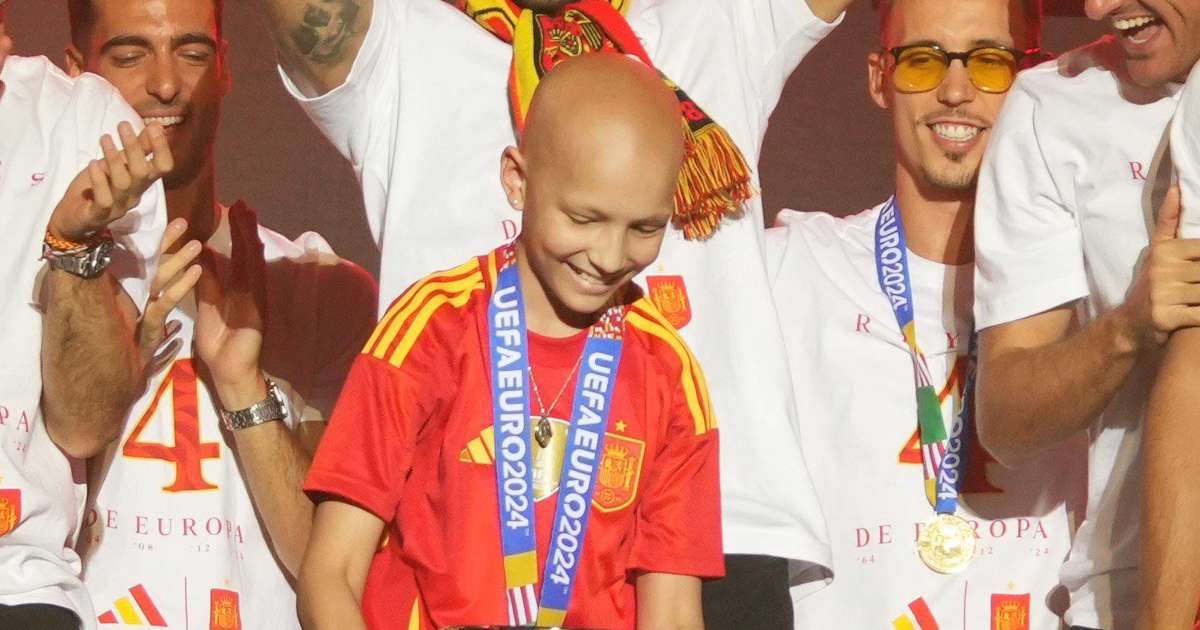What is Ewing’s sarcoma? The strange cancer made visible by Spanish football

Maria Caamaño is an 11-year-old girl who suffers from Ewing’s sarcoma and who celebrated their Euro 2024 victory with the Spanish national football team on July 16 with a big smile on their face. Like many people his age, he has many dreams, including be a midfielder and become an oncologist at the same time to be able to help children who suffer from the same disease as her.
In Spain, the incidence of this type of cancer is 1 new patient per 100,000 inhabitants per year. Therefore, we are talking about strange diseasebut at the same time it is the second most common bone cancer diagnosis in children and adolescents aged 10 to 20 years, according to data from the Spanish Society of Oncology and the Vall d’Hebron Hospital in Barcelona.


Spain’s players celebrate their Euro 2024 victory with Maria Caamaño.
Ewing’s sarcoma was first described in the early 20th century by an American pathologist. James Stephen Ewingwhich distinguished it from other similar tumors.
So, although the outlook for the disease has improved significantly since then, increased survival patients after 5 years from 44% to 68% In recent decades, according to the Spanish Association Against Cancer, experts have insisted that further research is needed: a petition led in Spain by the Smile of Maria project, which has now become more visible thanks to La Roja.
What is Ewing’s sarcoma? The key to early diagnosis
Ewing’s sarcoma is a major problem in pediatric oncology. That’s why it’s important that, beyond visibility and social obligations offered by these high-profile events, there are scientific studies that allow us to improve the methods of diagnosis and treatment of the disease, which, as has already been said, mainly affects children and young people.
This type of cancer occurs in bones or soft tissues which is found around them and differs from other mesenchymal bone sarcomas by chromosomes 11 and 22 are involvedwhich cause the production of an abnormal protein called EWS/FLI1, which in turn leads to the transformation of healthy cells into cancerous ones.
Although the exact reason for these changes is still unknown, Detection of this protein is critical to making a good diagnosis.which, according to the Mayo Clinic, can be suspected by the appearance of lumps in the arm, chest, leg, or pelvis.
In other words, the lack of tools to detect the disease could lead to the most alarming scenario: the spread of a tumor to other parts of the body, a process known as metastases– which becomes more serious if it reaches the lungs or other bones, including the spine.
In this sense, as with other types of cancer, its extent at diagnosis is of decisive importance, but also its size and location: According to sources, smaller tumors located in the extremities usually have a better prognosis, although treatment is still difficult and requiring interdisciplinary approaches.
quality of life, the problem of Ewing’s sarcoma
Treatment of Ewing’s sarcoma has improved in recent years worldwide, according to data provided by St. Jude Children’s Research Hospital, a leader in childhood cancer research, which shows that approximately 70% of children suffering from this disease are curedwith 30% being the percentage of those diagnosed with metastases.
Once detected, this type of cancer is treatable. neoadjuvant chemotherapywhich involves prescribing drugs to the patient to reduce the size of the tumor, and then performing surgery to remove it. In addition, another chemotherapy is subsequently prescribed, aimed at remove the remaining cancer cellsto reduce the risk of relapse.
In this case, it is a case where scientific research find your big task: Given that most relapses occur within the first 5 years after treatment, the Spanish Society of Oncology insists that patient monitoring should be extended.
Similarly, although the institute says there is insufficient data on the side effects of the therapy, one of the challenges in Ewing sarcoma research in the coming years is to improving the quality of life cured patients. And it is known that by investing in the technological development of radiation therapy, they could reduce complications associated with the surgical wound, pathological fractures and other possible problems arising as a result of treatment.
